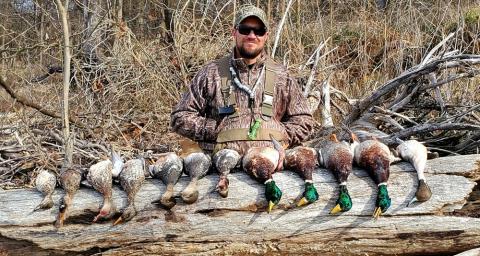
Tracking whitetail deer is an art form, and the more knowledge you possess, the better your chances of a successful recovery. Knowing how to understand body language and read the signs of a blood trail can help you track deer.
Approach Quietly
Mature whitetail deer need a safe space where they can feel at ease to feed during the hunting season. Getting close to them is more accessible in a vehicle, such as a quad bike or gator, than on foot. If you can ride out to your blind or tree stand, you’re less likely to tip off the deer to your presence and scare them away. Maintaining silence and controlling your scene is also vital in keeping mature whitetail deer in the area you plan to hunt.
Understanding Body Language
Deer body language is essential in assessing whether the deer has been hit and where it might’ve been hit. If a deer is still moving after an initial hit, you should reload and continue to shoot. If the deer runs off where you cannot safely fire another shot or arrow, it is critical to pay attention to where the deer is traveling; knowing which path the deer is starting down means that even without a blood trail, you have a sense of where to search to make a recovery.
If a deer runs off with his tail tucked, this indicates that your shot has hit in a good location. It will often jump and kick out its legs if it’s hit. When a deer hunches up after it's been shot, this signifies a gutshot. In this case, pay attention to where it runs, and then wait around 20 to 30 minutes before going out to recover your kill.
If you’re hunting with a rifle and you notice the deer’s leg lock up after a shot, this suggests that you’ve hit a shoulder. If you see a whitetail deer run off with its tail still up, this is a sign that you have most likely missed your target and should not go out to recover that deer. Understanding the whitetail deer’s body language is critical to the tracking process and can help you follow the blood trail successfully.
Following a Blood Trail
The type of blood on a blood trail is indicative of the state of the deer. If the blood is pink and frothy or bubbly, you’ve likely completed a double lung shot, and it’s safe to go out and collect the deer.
A heart shot with a bullet brings the deer down instantly in the most humane way, but you’ll want to aim to miss the shoulder and ribs when hunting with a bow. If you can avoid hitting these two areas, the arrow should travel clean through the deer. Hitting the shoulder or ribs slows down the arrow and might prevent it from making a kill shot.
While tracking a whitetail deer during bow hunting season, part of the tracking process can involve looking for the arrow. If the arrow has gone clean through the deer, indicating a more deadly hit, you’ll find it on the ground or lodged in the earth. If the arrow has blood on it, indicating it’s passed through the deer, you can check to see if the blood has the pink, bubbly quality due to a lung shot.
Grid Search the Area
If you’re unable to locate the deer following the blood trail, you will need to try a grid recovery search, in which you travel in a straight line in a grid pattern methodically to scour an area for the body.
Understanding the terrain’s topography is crucial when mapping the grid search area. Wounded deer are more likely to head for the cover of low ground or water sources, rather than higher terrain.
Depending on your hunting ground, you may need to enlist your hunting party’s help to grid search your deer. Assign quadrants to each member of your party, and alert neighboring property owners if you suspect your deer has traveled farther than anticipated.
How Long to Wait Before Recovery
Depending on whether you think you’ve completed a double lung shot, you may need to wait for a significant period before going out to recover your deer. In a situation where you have only hit one lung, the deer can continue living for a long time.
When this happens, waiting for a couple of hours gives the deer more time to expire and allows that hunting area to remain viable for you or others. Once you start the recovery process and move into that territory, other deer will move away, lowering the chance of another kill. When going out to recover a deer, ensure that all others hunting in the vicinity with you are aware and that their weapons are not loaded.
Ethical Obligations

While the tracking process can sometimes be long and tiring, it is the hunter’s ethical obligation to recover the deer. This holds regardless of how long it takes. If you determine there is no blood trail or your arrow is found clean (during bow hunting season), a judgment call needs to be made if it appears the deer was never actually hit.
Tracking whitetail deer requires skill, determination, and persistence. You must be hyper-focused during the hunt to read and understand the deer’s body language signals sent to you. Once you come to know how the deer’s movements correlate to where you’ve hit it, you can become more adept at recovering your kill and knowing how long to wait before doing so.
Paying attention to where the deer goes immediately after you hit it also helps speed up the recovery process by narrowing down the area you have to search.
Communicate well with others you are hunting with to go through the tracking process together and avoid hunting in the same vicinity someone else is tracking in for safety reasons.




























